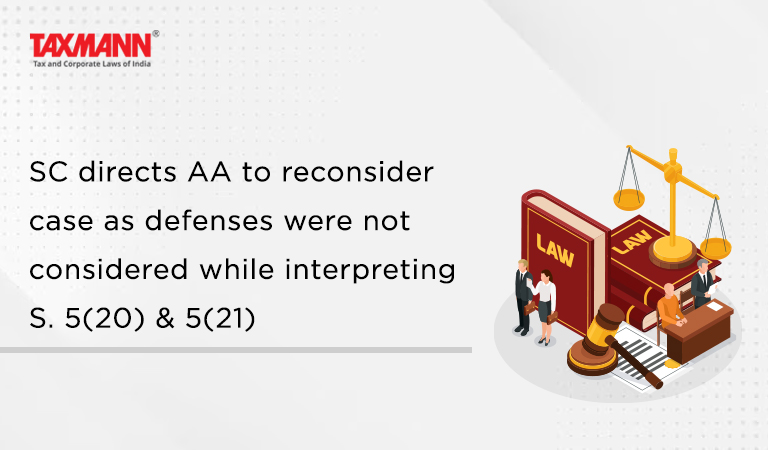SC directs AA to reconsider case as defenses were not considered while interpreting S. 5(20) & 5(21)
- Blog|News|Insolvency and Bankruptcy Code|
- 2 Min Read
- By Taxmann
- |
- Last Updated on 20 February, 2023
Case Details: Punj Lloyd Aviation Ltd. v. Chipsan Aviation Private Ltd. - [2023] 147 taxmann.com 336 (SC)
Judiciary and Counsel Details
-
- Dr Dhananjaya Y Chandrachud, CJI. & Dipankar Datta, J.
- Neeraj Kishan Kaul, Sr. Adv. Karan Luthra, Ms Pritha Suri, Vijetha Ravi, Ms Namisha Chaddha, Advs. & E.C. Agrawala, AOR for the Appellant.
- Barun Kumar Sinha, Ms Pratibha Sinha, Raghav Sharma, Ms Nidhi Vardhan, Kanishk Arora, Ms Shakshi Goyal, Advs. & Salvador Santosh Rebello, AOR for the Respondent.
Facts of the Case
In the instant case, the Adjudicating Authority (NCLT), while construing provisions of section 5(20) and section 5(21) of IBC held that in instant case, it was the corporate debtor who was the service provider and not the operational creditor.
The operational creditor had only filed the petition on the basis of an advance payment made by him, which was not refunded by the corporate debtor. The said advance payment didn’t fall within four corners of operational debt and therefore, alleged debt was not an operational debt as defined under section 5(21) of IBC. As a result, the petition was dismissed without any cost.
The decision mentioned above was reversed by the National Company Law Appellate Tribunal (NCLAT) which relied on the decision in Consolidated Construction Consortium Limited v. Hitro Energy Solutions Private Limited[2022] 7 SCC 164. The NCLAT held that Section 5(21) had to be interpreted in a broad and purposive manner in order to include all those who provide or receive operational services from the corporate debtor, which ultimately leads to an operational debt.
Thereafter, an appeal was made to the Supreme Court against the order passed by the NCLAT.
Supreme Court Held
The Supreme Court held that the NCLT, in its original order, had not considered the other defences that were raised by the applicant regarding the application under Section 9 of the IBC. Hence, on remand, all the rights and contentions of the parties regarding the merits of the case are kept open to be urged before and decided by the NCLT. Accordingly, the appeal stands disposed of.
Disclaimer: The content/information published on the website is only for general information of the user and shall not be construed as legal advice. While the Taxmann has exercised reasonable efforts to ensure the veracity of information/content published, Taxmann shall be under no liability in any manner whatsoever for incorrect information, if any.

Taxmann Publications has a dedicated in-house Research & Editorial Team. This team consists of a team of Chartered Accountants, Company Secretaries, and Lawyers. This team works under the guidance and supervision of editor-in-chief Mr Rakesh Bhargava.
The Research and Editorial Team is responsible for developing reliable and accurate content for the readers. The team follows the six-sigma approach to achieve the benchmark of zero error in its publications and research platforms. The team ensures that the following publication guidelines are thoroughly followed while developing the content:
- The statutory material is obtained only from the authorized and reliable sources
- All the latest developments in the judicial and legislative fields are covered
- Prepare the analytical write-ups on current, controversial, and important issues to help the readers to understand the concept and its implications
- Every content published by Taxmann is complete, accurate and lucid
- All evidence-based statements are supported with proper reference to Section, Circular No., Notification No. or citations
- The golden rules of grammar, style and consistency are thoroughly followed
- Font and size that’s easy to read and remain consistent across all imprint and digital publications are applied








 CA | CS | CMA
CA | CS | CMA


